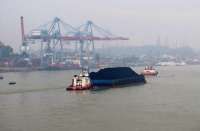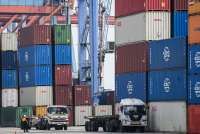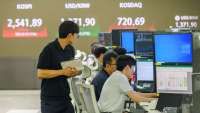MANUFAKTUR - JAKARTA. Indonesia's manufacturing industry expansion has slowed, having reached its highest point in the second quarter of 2018. This trend is evident from the Prompt Manufacturing Index (PMI) in the third and fourth quarters of 2018, although still at a fairly high expansion rate.
Quarter II-2018 PMI based on a report from Bank Indonesia (BI) reached an index of 52.4, the highest point since 2015. However, in the third quarter of 2018 the figure dropped to a level of 52.02. In the fourth quarter, the PMI is expected to decline back to 51.9.
BI Governor Perry Warjiyo explained, PMI shows the manufacturing industry is still in the expansion phase. This is indicated by the index above 50. Conversely, an index below 50 indicates contraction.
In the third quarter of 2018, the expansion of the manufacturing sector was mainly driven by an increase in the production volume index which reached the index of 55.18 from the previous quarter of 54.39. In addition, the volume index of finished goods inventories also increased to the level of 54.10 the previous quarter at the level of 53.15.
"Production volume has increased not only because orders have increased, but also to increase inventories. That is a sign that the manufacturing sector is anticipating future orders that are expected to increase," Perry explained, Friday (10/26). An increase in the production volume index helps maintain the employment index at the expansion level, which is 50.
Perry estimates that the expansion of the manufacturing industry sector will continue into the fourth quarter of this year. This is supported by demand in the domestic market in connection with the Christmas holiday and the end of the year, although lower than the third quarter of 2018.
This was due to a decrease in the production volume index and order volume respectively to 54.4 and 53.11. On the other hand, the number of employment indices increased to 50.12.
In line with the slowdown in invoice performance, Perry estimates Indonesia's economic growth in the third quarter of this year slowed to below 5.2%. According to him, domestic export performance is still difficult. "Except for manufacturing to the United States, external demand is slowing down. Especially the commodity base is generally from major trading partners such as China, the volume is not too large," Perry said.
Bank Permata economist Josua Pardede said the manufacturing sector was still expansive in terms of activity. This is in line with the still increasing imports of capital goods and raw materials. However, the growth rate of this sector is quite stagnant below 5%.
Based on data from the Ministry of Industry, the overall processing industry in the first quarter of 2018 grew only 4.5% year on year (yoy). Physical investment in this sector has also not shown a significant increase. Investment in machinery and equipment grew 23.72% yoy, but was dominated by the implementation of infrastructure development and the development of the mining sector.
Meanwhile, based on data from the Investment Coordinating Board (BKPM), the realization of foreign investment (PMA) in the manufacturing sector in the first quarter of 2018 fell 4.53% yoy and the realization of domestic investment (PMDN) fell 21.34% yoy.
"The investment climate is influenced by global factors such as protectionism and rising interest rates. Exports are also affected, which has an impact on the growth of the manufacturing sector," he told KONTAN.
Three challenges in 2019
Chairperson of the Indonesian Employers' Association (Apindo) Hariyadi Sukamdani said, in fact, some manufacturing sectors had not improved. For example, the property sector is still stagnant. "Meanwhile, there are many sectors of property derivatives, so they are not yet passionate," he said.
Entrepreneurs, he continued, also worried about the performance of the manufacturing sector next year, especially related to production costs. Because, a number of things will be a challenge in 2019.
First, the effect of rising fuel prices. Second, the movement of the rupiah exchange rate. If the rupiah moves more wildly, it will put pressure on the manufacturing sector. Third, the government will raise the provincial minimum wage (UMP) next year. This will be an additional burden on the manufacturing industry.
According to him, the government also needs to pay attention to manufacturing needs, especially raw materials.
He hopes that policies related to imports and import substitution are made clear and sustainable. "Don't make new tariffs anymore, or obstacles that make industrial costs go up," he said. n
/2018/10/26/311970291p.jpg)









